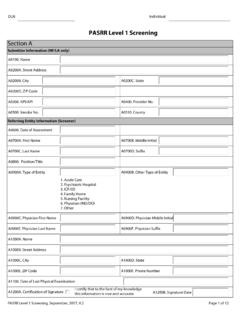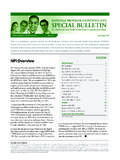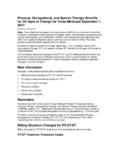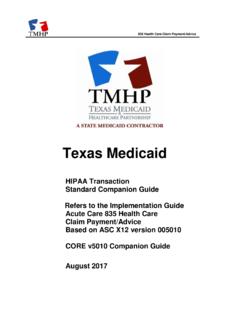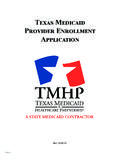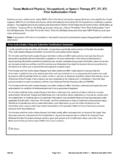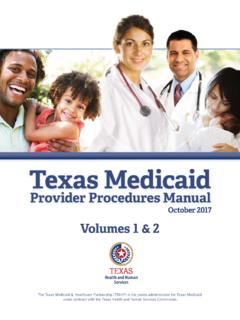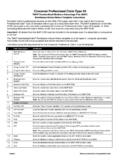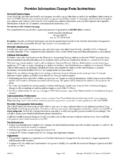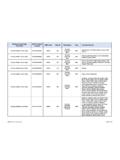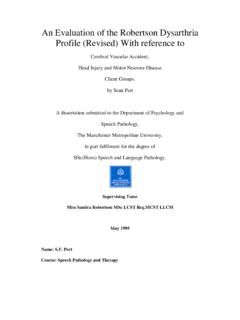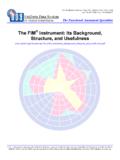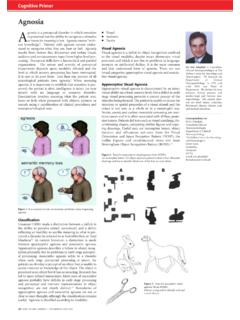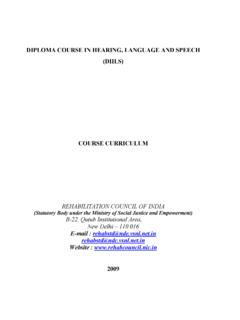Transcription of RESOURCE UTILIZATION GROUP (RUG)-III CALCULATION …
1 RESOURCE UTILIZATION GROUP (RUG)-III CALCULATION WORKSHEETWhat is it?The following worksheet has been provided to describe the method for CALCULATION of the RUG using the 108 data items from the Medical Necessity and Level of Care (MN and LOC) Assessment. Texas uses the Index Maximizing Method to arrive at the final use it? If a provider wants to understand how the scores of the 108 RUG items determine the resulting Worksheet and Definitions | v2010 0112 1 RUG-III CALCULATION WORKSHEET 34 GROUP MODEL This RUG-III CALCULATION worksheet is a step-by-step walk through to manually determine the appropriate RUG-III classification based on the information from the Medical Necessity and Level of Care (MN and LOC) assessment. The worksheet takes the computer programming and puts it into words. We have carefully reviewed the worksheet to insure that it represents the standard logic.
2 This worksheet is for the 34 GROUP RUG-III model. There is also a 44 GROUP model and a separate worksheet available for the 44 GROUP model. The major difference between the 44 GROUP model and the 34 model involves the Rehabilitation groups. In the 44 GROUP model, there are 14 different Rehabilitation groups representing 5 different levels of rehabilitation services. The 44 GROUP model is therefore well suited for use with restorative programs that classify individuals on the basis of both nursing care needs and rehabilitation needs. The SNF Medicare program is a good example of such a program. RUG-III models order the groups from high to low RESOURCE need. In the 44 GROUP model, the individuals in the Rehabilitation groups have the highest level of combined nursing and rehabilitation need, while individuals in the Extensive Services groups have the next highest level of need.
3 Therefore, the 44 GROUP model has the Rehabilitation groups first followed by the Extensive Services groups, the Special Care groups, the Clinically Complex groups, the Impaired Cognition groups, the Behavior Problems groups, and finally the Reduced Physical Functions groups. In the 34 GROUP model the Rehabilitation groups have been collapsed to 4 groups and different levels of rehabilitation service are not distinguished. The simplified Rehabilitation classification in the 34 GROUP model is better suited to long-term care programs, which often classify on the basis of nursing care needs only. Medicaid long-term care programs in many States are examples. In the 34 GROUP model, the Extensive Services groups have the highest level of nursing care needs, while the Rehabilitation groups have the next highest level of need. For this reason, the order of the Rehabilitation and Extensive Services groups are reversed in the 34 GROUP model, with the Extensive Services groups first.
4 There are two important issues that must be considered prior to using the RUG-III worksheet: 1 Checking out-of-range data values. 2 Choosing hierarchical versus index maximizing RUG-III classification . Our recommendations for handling these two issues are described below. 2 RUG Worksheet and Definitions | v2010 0112 OUT-OF-RANGE VALUES Out-of-range means that an item was answered with an invalid response. Consider an assessment with an out-of-range value of "2" on the B1 comatose item (the valid values for this item are "0", "1", and "-"). If a record indicates the value of "2" as the response for item B1 comatose, it is impossible to determine the actual RUG-III classification . The standard State software will assign a default RUG-III classification of "BC1" to the record, and the default value may have an impact on Medicaid and Medicare Prospective Payment System (PPS) payments.
5 When using the attached worksheet, first determine if there are any RUG-III items that are out-of-range. If any out-of-range values are present, then the RUG-III classification would be BC1 (the default), and there is no reason to work through the rest of the steps in the worksheet. If there are no out-of-range values, then the worksheet should be used to determine the actual classification . The attached "Table of Valid RUG-III Item Ranges" gives the valid range of values for each of the 108 RUG-III items. Note that a value "-" (dash) is allowed as valid, this value indicating "unable to determine." HIERARCHICAL VERSUS INDEX MAXIMIZING There are two basic approaches to RUG-III classification : (1) hierarchical classification and (2) index maximizing classification . The present worksheet is focused on the hierarchical approach but can be adapted to the index maximizing approach.
6 Hierarchical classification . The present worksheet employs the hierarchical classification method. Hierarchical classification is used in some payment systems, in staffing analysis, and in many research projects. In the hierarchical approach, you start at the top and work down through the RUG-III model, and the classification is the first GROUP for which the individual qualifies. In other words, start with the Extensive groups at the top of the RUG-III model. Then you work your way down through the groups in hierarchical order: Extensive Services, Rehabilitation, Special Care, Clinically Complex, Impaired Cognition, Behavior Problems, and Reduced Physical Functions. When you find the first of the 34 individual RUG-III groups for which the individual qualifies, then assign that GROUP as the RUG-III classification and you are finished.
7 If the individual would qualify in one of the Extensive Services groups and also in a Rehabilitation GROUP , always choose the Extensive Services classification , since it is higher in the hierarchy. Likewise, if the individual qualifies for Special Care and Clinically Complex, always choose Special Care. In hierarchical classification , always pick the GROUP nearer the top of the model. Index Maximizing classification . Index maximizing classification is used in Medicare PPS and most Medicaid payment systems. For a specific payment system, there will be a designated Case Mix Indices (CMI) for each RUG-III GROUP . The first step in index maximizing is to determine all of the RUG-III groups for which the individual qualifies. Then from the qualifying groups you choose the RUG-III GROUP that has the highest case mix RUG Worksheet and Definitions | v2010 0112 3index.
8 Index maximizing classification is simply choosing the GROUP with the highest index. While the present worksheet illustrates the hierarchical classification method, it can be adapted for index maximizing. To index maximize, you would evaluate all classification groups rather than assigning the individual to the first qualifying GROUP . In the index maximizing approach, you again start at the beginning of the worksheet. You then work down through all of the 34 RUG-III classification groups, ignoring instructions to skip groups and noting each GROUP for which the individual qualifies. When you finish, record the CMI for each of these groups. Select the GROUP with the highest CMI. This GROUP is the index maximized classification for the individual. If the individual would qualify in one of the Extensive Services groups and a Rehabilitation GROUP choose the RUG-III classification with the higher CMI.
9 Likewise, if the individual qualifies for Special Care and Clinically Complex, again choose the RUG-III classification with the higher CMI. Always select the classification with the highest CMI. 4 RUG Worksheet and Definitions | v2010 0112 September 9, 2008 MN and LOC RUG-III Items Table RUG-III Items Valid Ranges for MNLOC B. Cognitive Patterns The following field is considered in the RUG CALCULATION : B1 Comatose Comatose Yes or No B. Cognitive Patterns The following field is considered in the RUG CALCULATION : B2a Short Term Memory Short Term Memory - UTD (Unable to determine) 0 Memory OK 1 Memory Problem B. Cognitive Patterns The following field is considered in the RUG CALCULATION : B4 Cognitive Skills for Daily Decision Making Cognitive Skills for Daily Decision Making - UTD (Unable to determine) 0. Independent. 1. Modified Independence.
10 2. Moderately Impaired. 3. Severely Impaired. C. Communication/Hearing Patterns Only the following fields are considered in the RUG CALCULATION : C4 Making Self Understood Making Self Understood - UTD (Unable to determine) 0 = Understood. 1 = Usually Understood. 2 = Sometimes Understood. 3 = Rarely or Never Understood. E. Mood and Behavior Patterns 1. Indicators of Depression, Anxiety, Sad Mood All fields in question are used in the CALCULATION of the RUG. E1a Individual made negative statements. E1b Repetitive Questions E1c Repetitive verbalizations E1d Persistent anger with self or others. E1e Self deprecation. E1f Expressions of what appear to be unrealistic fears. E1g Recurrent statements that something terrible is about to happen. E1h Repetitive health complaints. E1i Repetitive anxious complaints/concerns (non-health related). E1j Unpleasant mood in morning.
